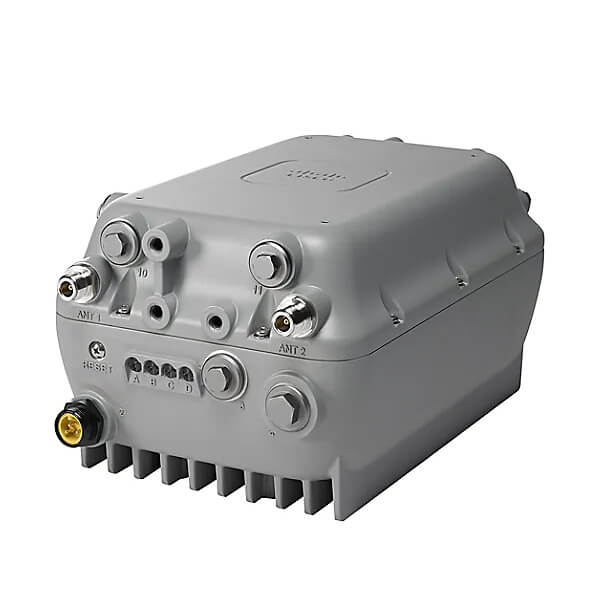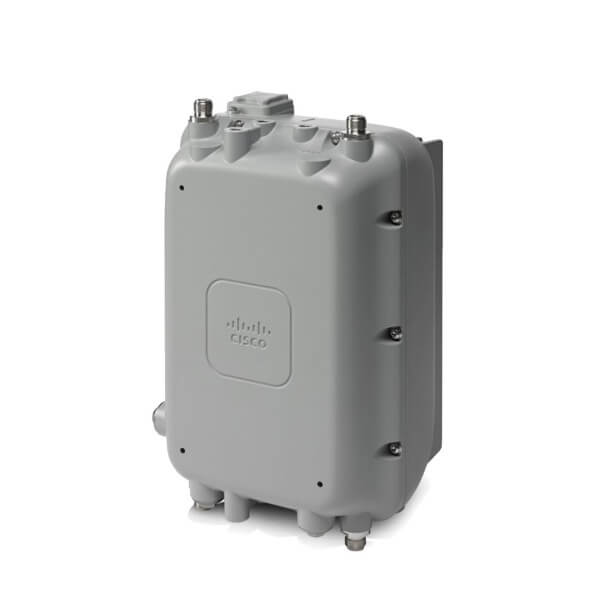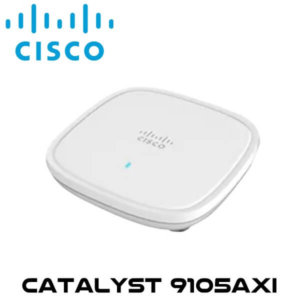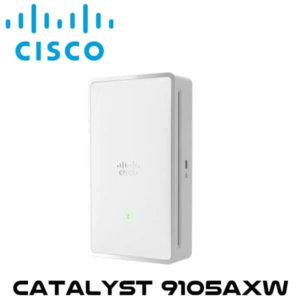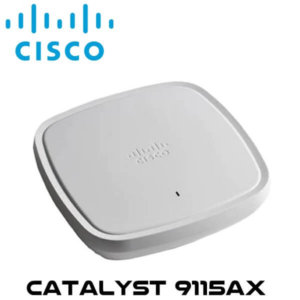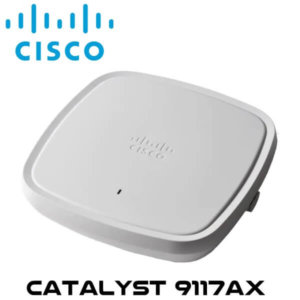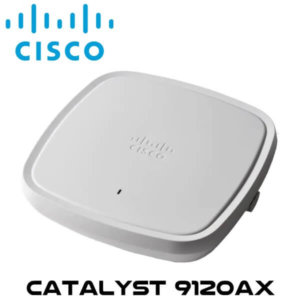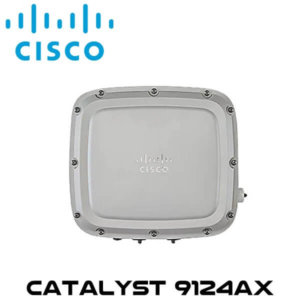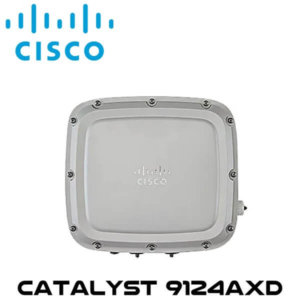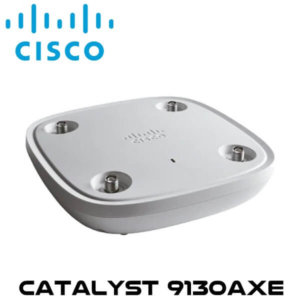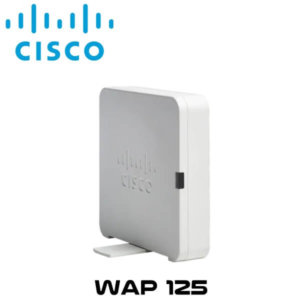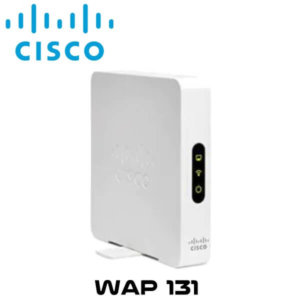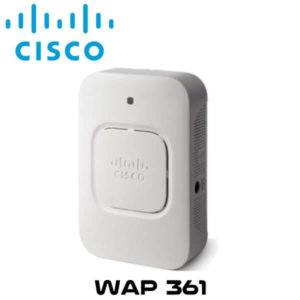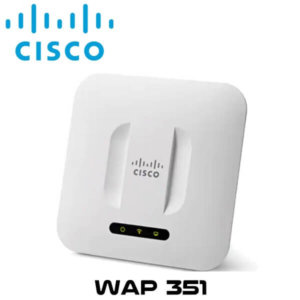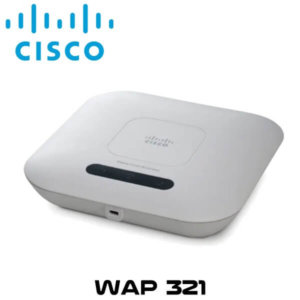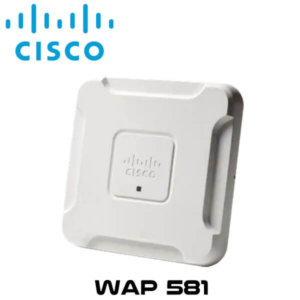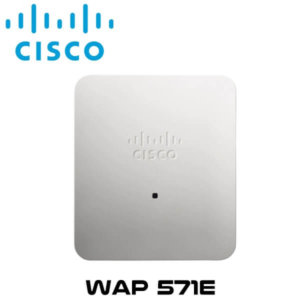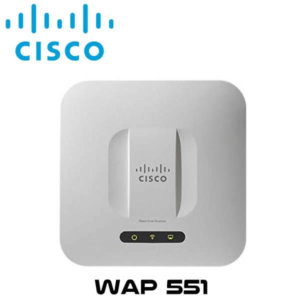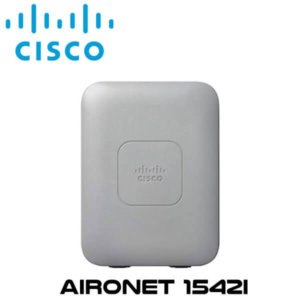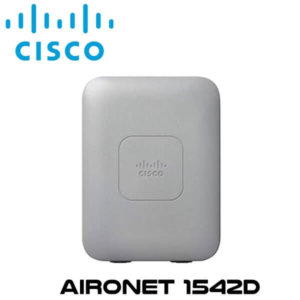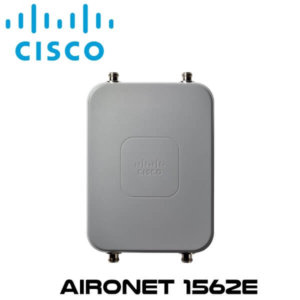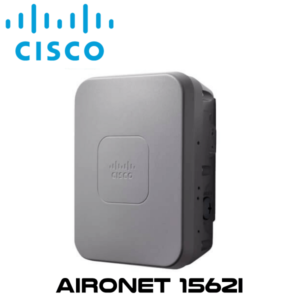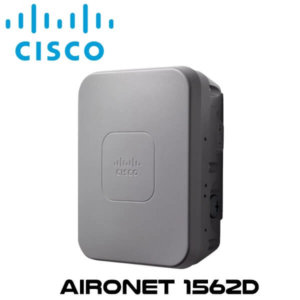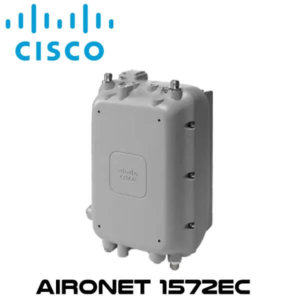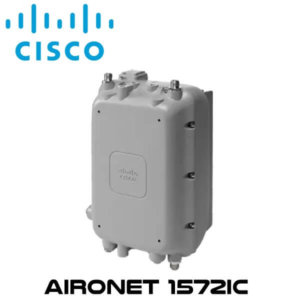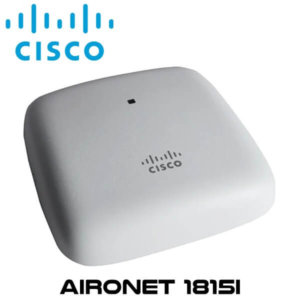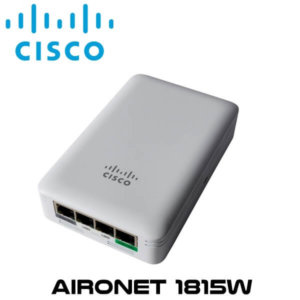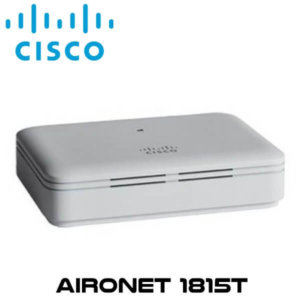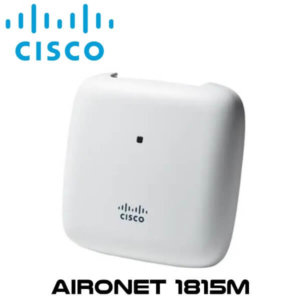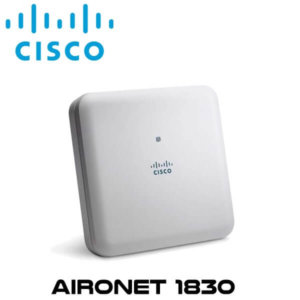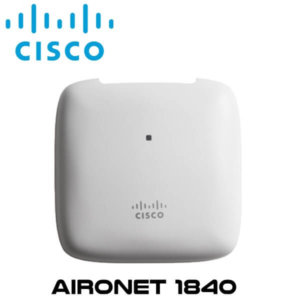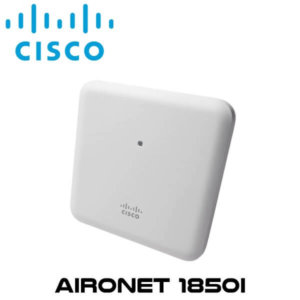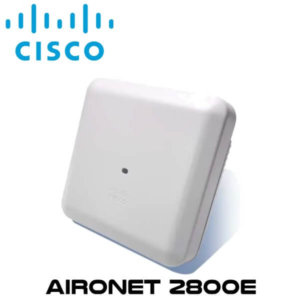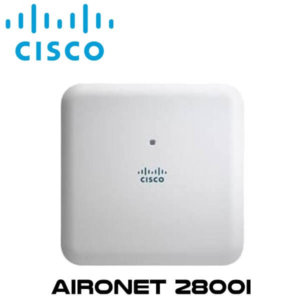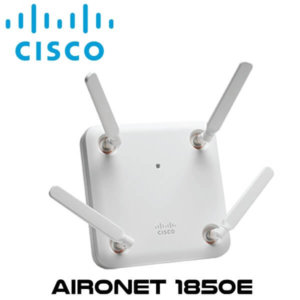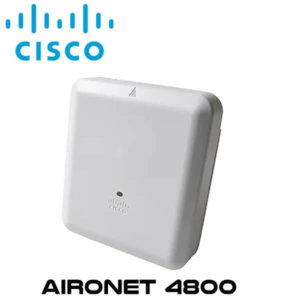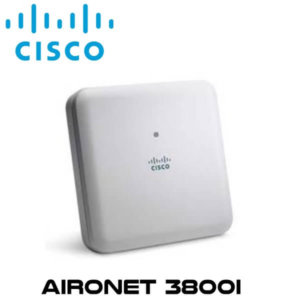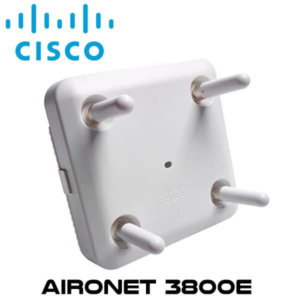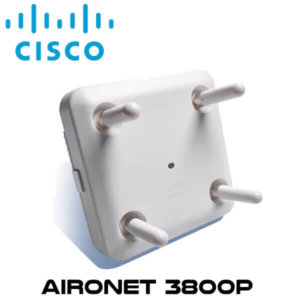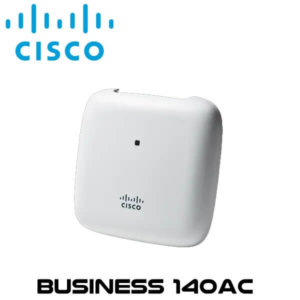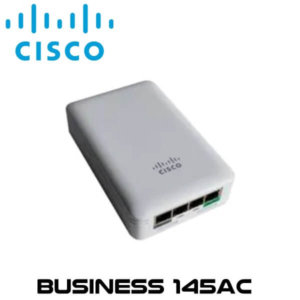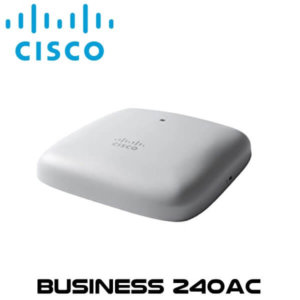Description
Cisco Aironet1572EAC Access Point Ghana
The Cisco Aironet1572EAC Ghana meets the demanding needs of customers across a broad range of industries spanning enterprises and service providers. It offers a scalable and secure mesh architecture for high-performance Wi-Fi services. Moreover, it addresses the expanding demand for Wi-Fi access services, network-to-network mobility, video surveillance, and cellular data offload to Wi-Fi.
Cisco Aironet1572EAC Ghana is the highest-performing outdoor wireless access point. This Cisco WiFi Ghana is ideal for both enterprise and carrier-class network operators looking to extend Wi-Fi coverage outdoors. It’s the industry’s highest-performing outdoor AP and supports the latest Wi-Fi standard, 802.11ac, with data connection speeds up to 1.3 Gbps. This industrial-grade Cisco WiFi Ghana supports 4×4 Multiple-Input and Multiple-Output (MIMO) smart antenna technology and three spatial streams for optimum performance.
The Cisco 1570 series builds and expands on the successful 1550 series legacy of being the Wi-Fi outdoor access point of choice by service providers needing carrier-grade, ruggedized devices that are easy to deploy and maintain. The Cisco Aironet1572EAC Ghana provides higher throughput over a larger area with more pervasive coverage. The AP is also well suited to high-density environments w here many users in close proximity generate RF interference that needs to be managed.
Features
802.11ac support with 4×4 MIMO, three spatial streams
Cisco Aironet1572EAC Ghana delivers higher data rates over a greater area with pervasive coverage than any competing Access Point. It provides a data rate of up to 1.3 Gbps, roughly triple the rates offered by today’s high-end 802.11n access points.
Maximum RF radiated power allowable on both 2.4 and 5 GHz radios
Cisco Aironet1572EAC allow you to utilize the fewest number of access points to get the greatest possible area coverage and highest throughput rates.
Cisco High-Density Experience (HDX
The Cisco WiFi Ghana maintain network performance as Wi-Fi clients, access points, and high-bandwidth applications join and roam the network.
Cisco CleanAir Technology
The Cisco Aironet1572EAC provides spectrum intelligence across 20-, 40-, and 80-MHz channels to combat performance problems caused by wireless interference. Also part of Cisco HDX technology.
Cisco ClientLink 3.0
Cisco Aironet1572EAC Ghana uses true beamforming smart-antenna technology to improve downlink performance by up to 6 dB to all mobile dev ices, including one-, two-, and three-spatial-stream devices on 802.11ac. Increases smartphone and tablet battery efficiency by up to 50 percent. Part of Cisco HDX technology
MIMO equalization
Boosts performance and reliability by reducing the impact of signal fade and associated “dead zones”
Cisco Flexible Antenna Port technology
Makes the AP’s external antenna ports software-configurable for either four dual-band (2.4 and 5 GHz) configuration or two pairs of single-band configuration with one pair operating at 2.4 GHz and the other at 5 GHz. This provides the operator with added flexibility in coverage options
Modular architecture design
The architecture of the Cisco Aironet1572EAC Ghana provides the flexibility for a potential add-on module for future proofing and investment protection. For example, you could add external modules with technology options such as a 4G LTE picocell or a sensor. Such a module could be field-upgradeable to an existing 1570 network
GPS support
With GPS capability keep track of the location of all outdoor APs deployed. With a built -in GPS receiver, the coordinates of the AP can be located by your WLAN controller or management system
Central management using Cisco Prime Infrastructure
Network lifecycle management tool that integrates with Cisco Aironet1572EAC Ghana and WLAN controllers to configure and manage y our wireless networks. Helps prevent costly maintenance service calls to outdoor locations. Network administrators have a single solution for RF prediction, policy provisioning, network optimization, troubleshooting, security monitoring, and WLAN system management.
Specifications
| Part numbers |
- Advanced Encryption Standard (AES) for Wi-Fi Protected Access 2 (WPA2)
- 802.1X, RADIUS Authentication, Authorization and Accounting (AAA)
- 802.11r
- 802.11i
|
| 802.11n Version 2.0 capabilities |
- 4×4 MIMO with three spatial streams (3SS)
- Maximal Ratio Combining (MRC)
- 802.11n and 802.11a/g Beamforming
- 20- and 40-MHz channels
- PHY data rates up to 450 Mbps (40 MHz with 5 GHz)
- Packet aggregation: A-MPDU (Tx/Rx), A-MSDU (Tx/Rx)
- 802.11 Dynamic Frequency Selection (DFS)
- Cyclic Shift Diversity (CSD) support
|
| 802.11ac Wave 1 capabilities |
- 4×4 MIMO with three spatial streams (3SS)
- Maximum Ratio Combining (MRC) : 802.11ac Beamforming
- 20-, 40-, and 80-MHz channels
- PHY data rates up to 1.3 Gbps (80 MHz with 5 GHz)
- Packet aggregation: A-MPDU (Tx/Rx), A-MSDU (Tx/Rx)
- 802.11 Dynamic Frequency Selection (DFS)
- Cyclic Shift Diversity (CSD) support
|
| DOCSIS 3.0 Capabilities |
- DOCSIS3.0 with up to 8×4, 16×8, and 24×8 Downstream (DS) x Upstream (US) channel bonding capability for Hybrid Fiber-Coaxial (HFC) Cable Modem (CM) options. The CM protocols include NA-DOCSIS3.0, Euro-DOCSIS3.0 and Japan-DOCSIS3.0. The NA-DOCSIS3.0 is offered with either (42/88 MHz or 85/108 MHz) diplexer split. The Euro and Japan DOCSIS are offered with (65/108 MHz) diplexer split.
- NA-DOCSIS3.0, Euro-DOCSIS3.0 24×8 cable modem provides up to:
- Twenty f our (24) bonded channels on the downstream with total throughput of up to 912 and 1200 Mbps respectively (maximum usable throughput without overhead)
- Eight (8) bonded channels on the upstream with total throughput of up to 216 Mbps (maximum usable throughput without overhead)
- Designed to meet DOCSIS 3.0 specifications as well as backward compatibility with existing DOCSIS2.0 networks
- Enhanced packet processing technology to maximize performance
- Channel-bonded cable modems must be used in conjunction with a Cable Modem Termination System (CMTS) that supports channel bonding per the DOCSIS3.0 specifications. When used with a non-channel-bonded CMTS, channel-bonded cable modems function as conventional DOCSIS 2.0 cable modems.
|
| Data rates supported |
2.4 GHz – 802.11b/g: 1, 2, 5.5, 6, 9, 11, 12, 18, 24, 36, 48, and 54 Mbps |
| 2.4 GHz – 802.11n: |
| Spatial Streams |
MCS Index1 |
GI2 = 800 ns |
GI = 400 ns |
| 20-MHz Rate (Mbps) |
20-MHz Rate (Mbps) |
| 1 |
0 |
6.5 |
7.2 |
| 1 |
1 |
13 |
14.4 |
| 1 |
2 |
19.5 |
21.7 |
| 1 |
3 |
26 |
28.9 |
| 1 |
4 |
39 |
43.3 |
| 1 |
5 |
52 |
57.8 |
| 1 |
6 |
58.5 |
65 |
| 1 |
7 |
65 |
72.2 |
| 2 |
8 |
13 |
14.4 |
| 2 |
9 |
26 |
28.9 |
| 2 |
10 |
39 |
43.3 |
| 2 |
11 |
52 |
57.8 |
| 2 |
12 |
78 |
86.7 |
| 2 |
13 |
104 |
115.6 |
| 2 |
14 |
117 |
130 |
| 2 |
15 |
130 |
144.4 |
| 3 |
16 |
19.5 |
21.7 |
| 3 |
17 |
39 |
43.3 |
| 3 |
18 |
58.5 |
65 |
| 3 |
19 |
78 |
86.7 |
| 3 |
20 |
117 |
130 |
| 3 |
21 |
156 |
173.3 |
| 3 |
22 |
175.5 |
195 |
| 3 |
23 |
195 |
216.7 |
| 802.11ac data rates on 5 GHz: |
| MCS Index |
Spatial Streams |
GI = 800 ns |
GI = 400 ns |
| 20-MHz Rate (Mbps) |
40-MHz Rate (Mbps) |
80-MHz Rate (Mbps) |
20-MHz Rate (Mbps) |
40-MHz Rate (Mbps) |
80-MHz Rate (Mbps) |
| 0 |
1 |
6.5 |
13.5 |
29.3 |
7.2 |
15 |
32.5 |
| 1 |
1 |
13 |
27 |
58.5 |
14.4 |
30 |
65 |
| 2 |
1 |
19.5 |
40.5 |
87.8 |
21.7 |
45 |
97.5 |
| 3 |
1 |
26 |
54 |
117 |
28.9 |
60 |
130 |
| 4 |
1 |
39 |
81 |
175.5 |
43.3 |
90 |
195 |
| 5 |
1 |
52 |
108 |
234 |
57.8 |
120 |
260 |
| 6 |
1 |
58.5 |
121.5 |
263.3 |
65 |
135 |
292.5 |
| 7 |
1 |
65 |
135 |
292.5 |
72.2 |
150 |
325 |
| 8 |
1 |
78 |
162 |
351 |
86.7 |
180 |
390 |
| 9 |
1 |
– |
180 |
390 |
– |
200 |
433.3 |
| 0 |
2 |
13 |
27 |
58.5 |
14.4 |
30 |
65 |
| 1 |
2 |
26 |
54 |
117 |
28.9 |
60 |
130 |
| 2 |
2 |
39 |
81 |
175.5 |
43.3 |
90 |
195 |
| 3 |
2 |
52 |
108 |
234 |
57.8 |
120 |
260 |
| 4 |
2 |
78 |
162 |
351 |
86.7 |
180 |
390 |
| 5 |
2 |
104 |
216 |
468 |
115.6 |
240 |
520 |
| 6 |
2 |
117 |
243 |
526.5 |
130 |
270 |
585 |
| 7 |
2 |
130 |
270 |
585 |
144.4 |
300 |
650 |
| 8 |
2 |
156 |
324 |
702 |
173.3 |
360 |
780 |
| 9 |
2 |
– |
360 |
780 |
– |
400 |
866.7 |
| 0 |
3 |
19.5 |
40.5 |
87.8 |
21.7 |
45 |
97.5 |
| 1 |
3 |
39 |
81 |
175.5 |
43.3 |
90 |
195 |
| 2 |
3 |
58.5 |
121.5 |
263.3 |
65 |
135 |
292.5 |
| 3 |
3 |
78 |
162 |
351 |
86.7 |
180 |
390 |
| 4 |
3 |
117 |
243 |
526.5 |
130 |
270 |
585 |
| 5 |
3 |
156 |
324 |
702 |
173.3 |
360 |
780 |
| 6 |
3 |
175.5 |
364.5 |
– |
195 |
405 |
– |
| 7 |
3 |
195 |
450 |
877.5 |
216.7 |
450 |
975 |
| 8 |
3 |
234 |
486 |
1053 |
260 |
540 |
1170 |
| 9 |
3 |
260 |
540 |
1170 |
288.9 |
600 |
1300 |
| Maximum number of non-overlapping channels |
- A (A regulatory domain) :
- 2.412 to 2.462 GHz, 11 channels
- 5.280 to 5.320 GHz, 3 channels
- 5.500 to 5.560 GHz, 4 channels
- 5.680 to 5.700 GHz, 2 channels
- 5.745 to 5.825 GHz, 5 channels
- B (B regulatory domain) :
- 2.412 to 2.462 GHz, 11 channels
- 5.180 to 5.240 GHz, 4 channels
- 5.260 to 5.320 GHz, 4 channels
- 5.500 to 5.560 GHz, 4 channels
- 5.680 to 5.720 GHz, 3 channels
- 5.745 to 5.825 GHz, 5 channels
- C (C regulatory domain) :
- 2.412 to 2.462 GHz, 11 channels
- 5.745 to 5.825 GHz, 5 channels
- D (D regulatory domain):
- 2.412 to 2.462 GHz, 11 channels
- 5.745 to 5.865 GHz, 7 channels
- E (E regulatory domain) :
- 2.412 to 2.462 GHz, 11 channels
- 5.500 to 5.580 GHz, 5 channels
- 5.660 to 5.700 GHz, 3 channels
- F (F regulatory domain) :
- 2.412 to 2.462 GHz, 11 channels
- 5.745 to 5.805 GHz, 4 channels
- H (H regulatory domain) :
- 2.412 to 2.462 GHz, 1 channels
- 5.745 to 5.825 GHz, 5 channels
- I (I regulatory domain) :
- 2.412 to 2.472 GHz, 13 channels
- 5.180 to 5.320 GHz, 8 channels
|
- K (K regulatory domain) :
- 2.412 to 2.462 GHz, 11 channels
- 5.280 to 5.320 GHz, 3 channels
- 5.500 to 5.620 GHz, 7 channels
- 5.745 to 5.805 GHz, 4 channels
- M (M regulatory domain) :
- 2.412 to 2.462 GHz, 11 channels
- 5.500 to 5.580 GHz, 5 channels
- 5.660 to 5.700 GHz, 3 channels
- 5.745 to 5.805 GHz, 4 channels
- N (N regulatory domain) :
- 2.412 to 2.462 GHz, 11 channels
- 5.745 to 5.825 GHz, 5 channels
- Q (Q regulatory domain) :
- 2.412 to 2.462 GHz, 11 channels
- 5.500 to 5.700 GHz, 11 channels
- R (R regulatory domain) :
- 2.412 to 2.462 GHz, 11 channels
- 5.260 to 5.320 GHz, 4 channels
- 5.660 to 5.700 GHz, 3 channels
- 5.745 to 5.825 GHz, 5 channels
- S (S regulatory domain) :
- 2.412 to 2.462 GHz, 11 channels
- 5.500 to 5.700 GHz, 11 channels
- 5.745 to 5.825 GHz, 5 channels
- T (T regulatory domain) :
- 2.412 to 2.462 GHz, 11 channels
- 5.500 to 5.580 GHz, 5 channels
- 5.660 to 5.700 GHz, 3 channels
- 5.745 to 5.825 GHz, 5 channels
- Z (Z regulatory domain) :
- 2.412 to 2.462 GHz, 11 channels
- 5.500 to 5.580 GHz, 5 channels
- 5.660 to 5.700 GHz, 3 channels
- 5.745 to 5.825 GHz, 5 channels
|
| Note : This varies by regulatory domain. Refer to the product documentation for specific details for each regulatory domain. |
| Maximum Number of Non-overlapping Channels |
2.4 GHz
|
5 GHz
- 802.11a :
- 802.11n :
- 802.11ac :
- 20 MHz : 27
- 40 MHz : 13
- 80 MHz : 6
|
| Maximum Conducted Transmit Power |
2.4 GHz
- 802.11, 802.11b (DSSS, CCK)
- 802.11g (non HT20)
- 802.11n (HT20)
|
5 GHz
- 802.11a (non HT20)
- 802.11n non-HT duplicate (802.11a duplicate) mode
- 802.11n (HT20)
- 802.11n (HT40)
- 802.11ac
- non-HT80 : 30 dBm, 4 antennas
- VHT20 : 30 dBm, 4 antennas
- VHT40 : 30 dBm, 4 antennas
- VHT80 : 30 dBm, 4 antennas
- VHT20-STBC : 30 dBm, 4 antennas
- VHT40-STBC : 30 dBm, 4 antennas
- VHT80-STBC : 30 dBm, 4 antennas
|
| Interface |
- WAN port 10/100/1000BASE-T Ethernet, autosensing (RJ-45)
- LAN port 10/100/1000BASE-T Ethernet, autosensing (RJ-45)
- Fiber SFP
- Cable modem : NA-DOCSIS3.0/Euro-DOCSIS3.0/Japan-DOCSIS3.0 (8×4, 16×8, or 24×8)
- Management console port (RJ-45)
- Four multicolor LEDs
- Reset button
|
| Uplink options |
- 1572EAC : Ethernet, Fiber SFP, Wireless Mesh
- 1572IC : Ethernet, Fiber SFP, Wireless Mesh, Cable Modem
- 1572EC : Ethernet, Fiber SFP, Wireless Mesh, Cable Modem
|
| Dimensions (W x L x H) |
- 1572EAC/1572EC : 11.8 x 7.9 x 6.3 in. (30.0 x 20.1 x 16.0 cm)
- 1572IC : 11.8 x 7.9 x 7.9 in. (30.0 x 20.1 x 20.1 cm)
|
| Weight |
- 1572EAC/1572EC : 13.5 lbs. (6.1 kg)
- 1572IC : 11.5 lbs. (5.2 kg)
|
| Environmental |
- Operating temperature
- -40 to 65°C (-40 to 149°F) ambient air with no solar loading
- -40 to 55°C (-40 to 131°F) ambient air with solar loading 743W/m2 (details in HW installation guide)
- Storage temperature : -50 to 70°C (-58 to 158°F)
- Humidity : 5 – 95%, non-condensing
- Wind resistance :
- Up to 100-MPH sustained winds
- Up to 165-MPH wind gusts
|
| Environmental Ratings |
|
| Antennas |
- 1572EAC/1572EC/1572IC
- GPS Antenna: AIR-ANT-GPS-1
- 1572EAC/1572EC (external antennas)
- Dual-Band
- AIR-ANT2568VG-N 6 dBi (2.4 GHz), 8 dBi (5 GHz) Omni
- AIR-ANT2547VG-N 4 dBi (2.4 GHz), 7 dBi (5 GHz) Omni
- AIR-ANT2547V-N 4 dBi (2.4 GHz), 7 dBi (5 GHz) Omni
- AIR-ANT2588P3M-N= 8 dBi (2.4 GHz), 8 dBi (5 GHz) Directional
- AIR-ANT2513P4M-N= 13 dBi (2.4 GHz), 13 dBi (5 GHz) Directional
- Single Band
- AIR-ANT2420V-N= 2 dBi (2.4 GHz), Omni, right-angle
- AIR-ANT2450V-N= 5 dBi (2.4GHz), Omni
- AIR-ANT2480V-N= 8 dBi (2.4 GHz), Omni
- AIR-ANT2413P2M-N= 13 dBi (2.4 GHz), Directional, dual polarized
- 5 GHz
- AIR-ANT5140V-N= 4 dBi (5 GHz), Omni, right-angle
- AIR-ANT5180V-N= 8 dBi (5GHz), Omni
- AIR-ANT5114P2M-N= 14 dBi (5GHz), Directional, dual polarized
- 1572IC (internal antennas)
- Integrated Dual Band Omnidirectional Antenna Radome: 4 dBi (2.4 GHz), 6 dBi (5 GHz)
|
| Powering options |
1572EAC
- AC : 100-277 VAC, 50/60 Hz
- DC : 10 to 16 VDC
- PoE-Input :
- UPOE compliant PSE
- Cisco AIR-PWRINJ1500-2= PoE-out: PoE+ (802.3at)
|
1572IC/1572EC
- PoC : 40-90 VAC, 50/60 Hz, quasi-square wave, Power over Cable (PoC)
- DC : 10 to 16 VDC
- PoE-out : PoE+ (802.3at), 1572EC only
|
| Power draw |
Kensington lock slot to lock device to mounting bracket |
| Physical security |
Included with the access point: mounting bracket AIR-AP-BRACKET-NS or AIR-MOD-AC-XX |
| Mounting |
- AIR-MOD-POE for Ethernet and PoE powering
- AIR-MOD-AC-XX for direct electrical socket powering
- AIR-MOD-USB-XX for power via USB power source
|
| Compliance |
- Safety
- UL/cUL 60950, 2 nd Edition
- IEC 60950, 2 nd Edition
- EN 60950, 2 nd Edition
- ARIB-STD 66 (Japan)
- ARIB-STD T71 (Japan)
- Immunity
- <= 5 mJ f or 6kV/3kA @ 8/20 ms waveform
- ANSI/IEEE C62.41
- EN61000-4-5 Lev el 4 AC Surge Immunity
- EN61000-4-4 Lev el 4 Electrical Fast Transient Burst Immunity
- EN61000-4-3 Lev el 4 EMC Field Immunity
- EN61000-4-2 Lev el 4 ESD Immunity
- EN60950 Overvoltage Category IV
- Radio approvals
- FCC Part 15.247, 15.407
- FCC Bulletin OET-65C
- RSS-210
- RSS-102
- AS/NZS 4268.2003
- EN 300 328
- EN 301 893
- EMI and susceptibility
- FCC part 15.107, 15.109
- ICES-003
- EN 301 489-1, -17
- Security
- Wireless bridging/mesh
- X.509 digital certificates
- MAC address authentication
- Advanced Encryption Standards (AES), Temporal Key Integrity Protocol (TKIP)
- Wireless access
- 802.11i, Wi-Fi Protected Access (WPA2), WPA
- 802.1X authentication, including Extensible Authentication Protocol and Protected EAP (EAP-PEAP), EAP Transport Layer Security (EAP-TLS), EAP-Tunneled TLS (EAP-TTLS), and Cisco LEAP
- Advanced Encryption Standards (AES), Temporal Key Integrity Protocol (TKIP)
- VPN pass-through
- IP Security (IPsec)
- Layer 2 Tunneling Protocol (L2TP)
- MAC address filtering
|
| Configuration Options |
- Flexible deployment configurations include:
- Controller-based
- Standalone (future)
- Mesh
- Point-to-point or point-to-multipoint campus bridge
- Serial backhaul (linear mesh)
- Workgroup bridge
|




